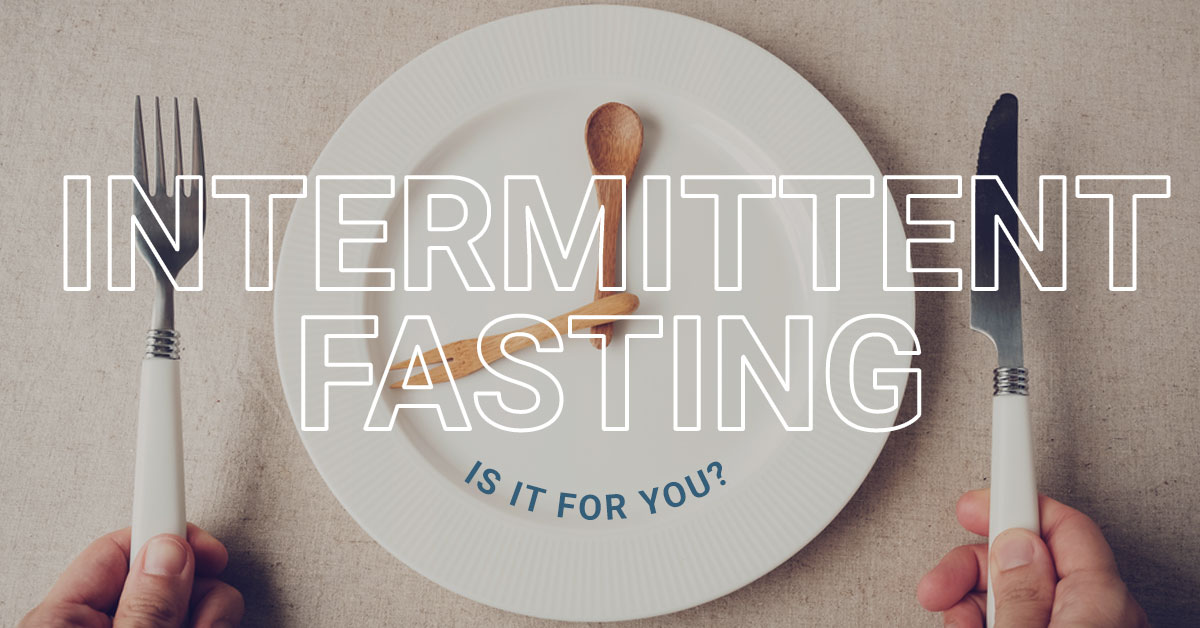
Intermittent Fasting: Is It for You?
One of the latest trends in the health world is intermittent fasting. Many people are using it to lose weight and to simplify their eating plans. Since popularity does not always mean it is the best option, there has been a lot of research on intermittent fasting that gives more details about the pros and cons of opting for this kind of method.
What is Intermittent Fasting?
To put it simply, intermittent fasting is eating in cycles and having extended periods without eating. This has become popularised by those who follow the Paleo diet as they suggest that in our ancestral hunter gatherer days we would have gone for days at a time without game for food. The concept behind this is that we may not require 3 meals a day with snacks in order to stay alive and thrive…
The type of intermittent fasting that we will touch base on will not be for the “more extreme” versions such as week or day long juice and water fasts but instead we will focus on a more realistic strategy where the daily “eating window” is restricted to an 8-hour period. This might be as simple for some as skipping breakfast, having breakfast and an early dinner, or just a stand alone evening feast.
During the fasting period, no calories are consumed. Just drinking water, black coffee and tea without milk is generally allowed. After 8 hours of fasting the body will begin to burn excess fat from your fat stores which can accelerate the rate of fat loss in those seeking to lose it.
What is the eating window?
The eating window is the hours during the day when food is eaten. It is important to still consume enough calories during this window and exercise, if possible, during the eating window too. Sleep is also counted toward the fasting window time.
There are several different options for implementing a fasting schedule. The first is a 12/12 fast. This means you fast for 12 hours a day and the eating window is 12 hours. This is a great option for people who are just starting out.
The most popular split is a 16/8, where fasting is done 16 hours of the day and the eating window is 8 hours long. This will provide more benefits than the 12/12 fasting split and speeds up fat loss. Many people find that it is easiest to skip breakfast and start eating at noon, but the eating window can start at any time that works for your personal schedule.
The Benefits of Intermittent Fasting
The biggest benefit that people find to eating in a specific time window is that they eat less overall and lose weight. Rather than feeling hungry throughout the day and munching mindlessly, people find they have more control over their appetites. Other benefits include:
- Clearer mind
- Increased longevity
- Lower risk of diabetes and insulin sensitivity
- Reduces triglyceride levels
- Increased energy
Some people find that not even changing their diet, just the timing of eating, contributes to weight loss. This is because the eating pattern lowers insulin levels making it easier for the body to convert stored body fat into energy. It also releases ketones into the bloodstream, encouraging fat loss too.
Losing weight isn’t the only focus for some fasters though. It can also be an effective strategy for maintaining a healthy weight, making healthier food choices, and feeling better overall.
Fasting can also normalise ghrelin levels too. Ghrelin is known as the “hunger hormone” as it tells you when you are hungry. Really restrictive eating can increase ghrelin production which can make you feel hungrier. When you fast, after several days (though it may be a struggle), your ghrelin levels should begin to normalise which eventually will cause you to stop feeling hungry just because it’s your usual meal time. This will help you become more in tune with when your body is actually hungry rather than basing your eating habits on routine.
Risks of intermittent fasting
For those who have or have had a disordered relationship with food, they may be more prone to binge eating. Experiencing long periods without food can often cause people to feel like they’ve “earned” a certain food that would otherwise be deemed as unhealthy.
People who experience issues with their blood sugar levels (especially diabetics) should consult with their health care provider before considering making changes to the intervals between consuming carbohydrates. It would be advisable to do this under medical guidance to ensure it is safe to do so by minimising the risk of hypoglycaemia.
If you aren’t paying close attention during the fasting periods, it can become very easy to forget to keep yourself hydrated. Dehydration can lead to headaches and dizziness that are best avoided.
Conclusion
With so many different options for intermittent fasting, people really can customise their diets to work around their lifestyle. If you try one way and don’t see results or don’t like the way you feel as a result, simply try another form of fasting.
Intermittent fasting has been shown to be a helpful and effective way to manage weight. The typical calorie restriction diets are just as effective for losing weight, but it just comes down to personal preference. Some people find that having an eating window is easier for their personal circumstances and preferences while others choose to use a traditional calorie restriction diet if their goal is to reduce their body fat levels.
Fasting requires a certain level of self control and the ability to strike a balance between meeting bodily requirements and cravings. Most of us tend not to fit into this category. Within our local community the vast majority of us seem to do a lot better with a regular consumption of healthful wholefoods where we are able to moderate our meals to correct portion sizes.
You may try it out and feel amazing for it and if you do we would love for you to share your stories with us. If you don’t notice a positive benefit, at least you will have tried something that may have pushed you out of your comfort zone, that may also challenge your way of thinking about food which might lead you to delve deeper into the world of nutrition in the future.


